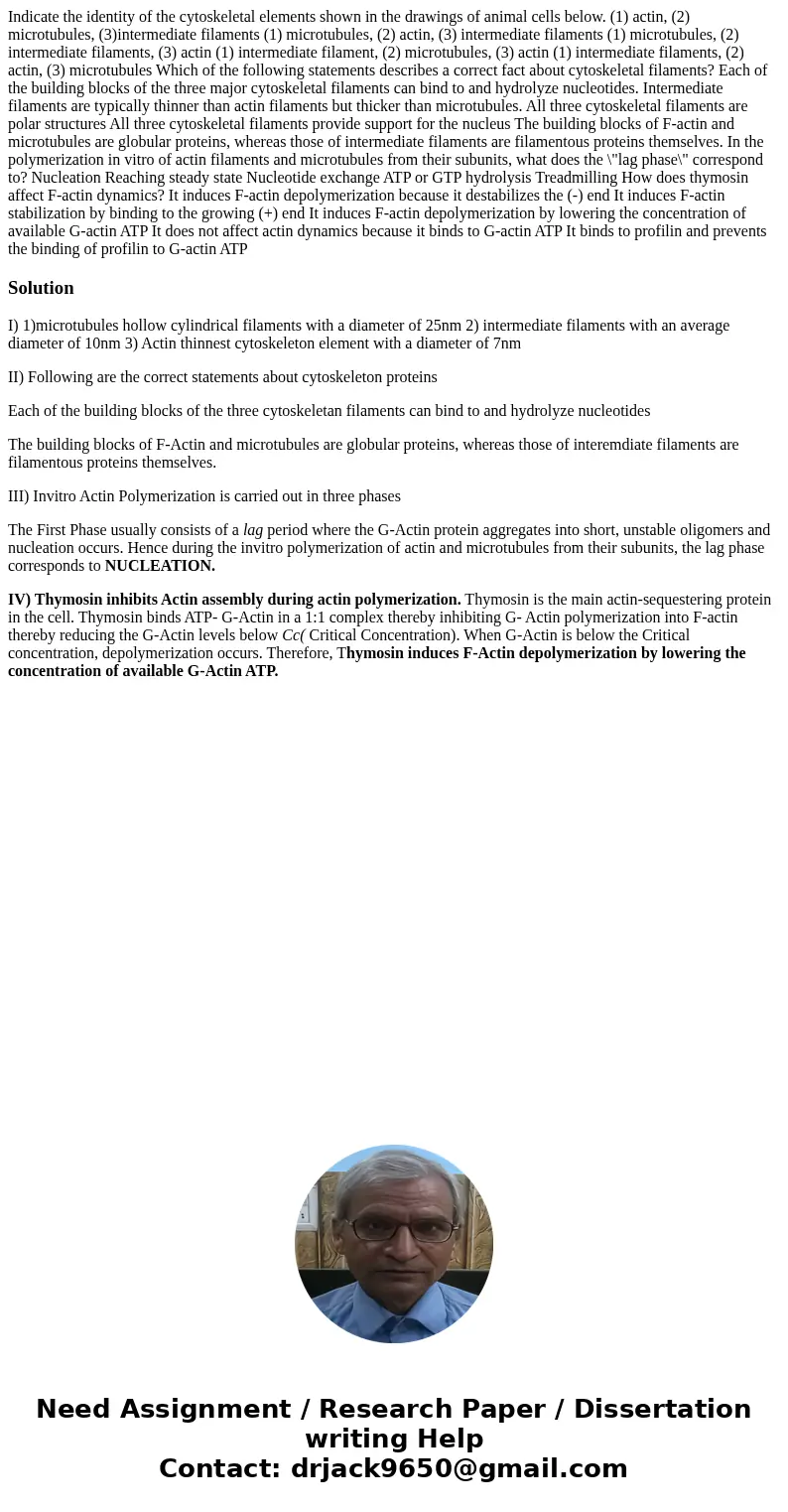Indicate the identity of the cytoskeletal elements shown in the drawings of animal cells below. (1) actin, (2) microtubules, (3)intermediate filaments (1) microtubules, (2) actin, (3) intermediate filaments (1) microtubules, (2) intermediate filaments, (3) actin (1) intermediate filament, (2) microtubules, (3) actin (1) intermediate filaments, (2) actin, (3) microtubules Which of the following statements describes a correct fact about cytoskeletal filaments? Each of the building blocks of the three major cytoskeletal filaments can bind to and hydrolyze nucleotides. Intermediate filaments are typically thinner than actin filaments but thicker than microtubules. All three cytoskeletal filaments are polar structures All three cytoskeletal filaments provide support for the nucleus The building blocks of F-actin and microtubules are globular proteins, whereas those of intermediate filaments are filamentous proteins themselves. In the polymerization in vitro of actin filaments and microtubules from their subunits, what does the \"lag phase\" correspond to? Nucleation Reaching steady state Nucleotide exchange ATP or GTP hydrolysis Treadmilling How does thymosin affect F-actin dynamics? It induces F-actin depolymerization because it destabilizes the (-) end It induces F-actin stabilization by binding to the growing (+) end It induces F-actin depolymerization by lowering the concentration of available G-actin ATP It does not affect actin dynamics because it binds to G-actin ATP It binds to profilin and prevents the binding of profilin to G-actin ATP
I) 1)microtubules hollow cylindrical filaments with a diameter of 25nm 2) intermediate filaments with an average diameter of 10nm 3) Actin thinnest cytoskeleton element with a diameter of 7nm
II) Following are the correct statements about cytoskeleton proteins
Each of the building blocks of the three cytoskeletan filaments can bind to and hydrolyze nucleotides
The building blocks of F-Actin and microtubules are globular proteins, whereas those of interemdiate filaments are filamentous proteins themselves.
III) Invitro Actin Polymerization is carried out in three phases
The First Phase usually consists of a lag period where the G-Actin protein aggregates into short, unstable oligomers and nucleation occurs. Hence during the invitro polymerization of actin and microtubules from their subunits, the lag phase corresponds to NUCLEATION.
IV) Thymosin inhibits Actin assembly during actin polymerization. Thymosin is the main actin-sequestering protein in the cell. Thymosin binds ATP- G-Actin in a 1:1 complex thereby inhibiting G- Actin polymerization into F-actin thereby reducing the G-Actin levels below Cc( Critical Concentration). When G-Actin is below the Critical concentration, depolymerization occurs. Therefore, Thymosin induces F-Actin depolymerization by lowering the concentration of available G-Actin ATP.

 Homework Sourse
Homework Sourse